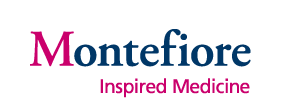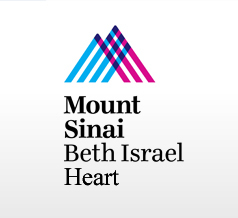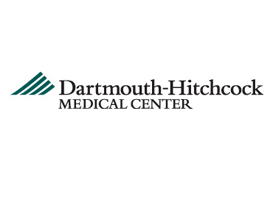Inhaled Nitric Oxide/INOpulse DS for Pulmonary Arterial Hypertension (PAH)
| Status: | Completed |
|---|---|
| Conditions: | High Blood Pressure (Hypertension) |
| Therapuetic Areas: | Cardiology / Vascular Diseases |
| Healthy: | No |
| Age Range: | 16 - 80 |
| Updated: | 7/13/2018 |
| Start Date: | April 2012 |
| End Date: | July 2016 |
A Phase 2, Placebo Controlled, Double-Blind, Randomized, Clinical Study to Determine Safety, Tolerability and Efficacy of Pulsed, Inhaled Nitric Oxide (iNO) Versus Placebo as Add-On Therapy in Symptomatic Subjects With Pulmonary Arterial Hypertension (PAH)
This is a Phase 2, Placebo Controlled, Double-Blind, Randomized, Clinical Study to Determine
Safety, Tolerability and Efficacy of Pulsed, Inhaled Nitric Oxide (iNO) Versus Placebo as
Add-on Therapy in Symptomatic Subjects with Pulmonary Arterial Hypertension (PAH).
Safety, Tolerability and Efficacy of Pulsed, Inhaled Nitric Oxide (iNO) Versus Placebo as
Add-on Therapy in Symptomatic Subjects with Pulmonary Arterial Hypertension (PAH).
Study to determine if inhaled nitric oxide (iNO) given through a special delivery device
(INOpulse® DS) is safe and efficacious in treating Pulmonary Arterial Hypertension (PAH).
Medical literature and clinical experience suggests that iNO at pulsed doses of 0.013 to 0.1
mg/kg per hour for 1 month to 2+ years appears safe and suggests efficacy for the treatment
of pulmonary hypertension.
There are two parts to this study. In Part 1 (week 0 to week 16), the objectives are to
determine the safety, tolerability, efficacy, and exploratory objectives of two different
doses of iNO delivered by a pulsed delivery device in symptomatic subjects with PAH who
remain symptomatic due to PAH on approved PAH monotherapy or combination approved PAH
therapy. In Part 2 (week 17 to end of study Part 2 [EOS Part 2]), the objective is to compile
data on the long-term effects of iNO on safety, tolerability, clinical and hemodynamic
measures.
(INOpulse® DS) is safe and efficacious in treating Pulmonary Arterial Hypertension (PAH).
Medical literature and clinical experience suggests that iNO at pulsed doses of 0.013 to 0.1
mg/kg per hour for 1 month to 2+ years appears safe and suggests efficacy for the treatment
of pulmonary hypertension.
There are two parts to this study. In Part 1 (week 0 to week 16), the objectives are to
determine the safety, tolerability, efficacy, and exploratory objectives of two different
doses of iNO delivered by a pulsed delivery device in symptomatic subjects with PAH who
remain symptomatic due to PAH on approved PAH monotherapy or combination approved PAH
therapy. In Part 2 (week 17 to end of study Part 2 [EOS Part 2]), the objective is to compile
data on the long-term effects of iNO on safety, tolerability, clinical and hemodynamic
measures.
Inclusion Criteria:
1. Signed informed consent form (ICF) (and assent as appropriate) prior to the initiation
of any study mandated procedures or assessments
2. A confirmed diagnosis of Pulmonary Hypertension Group 1 (PAH) who have either
idiopathic PAH (IPAH), heritable PAH, anorexigen-induced PAH, associated PAH (APAH)
with connective tissue disease (CTD), APAH with repaired simple congenital systemic to
pulmonary shunt (i.e., atrial septal defect [ASD], ventricular septal defect [VSD]
and/or patent ductus arteriosus [PDA]; complete repair at least 1 year prior to
Screening) or APAH with human immunodeficiency virus (HIV)
3. Confirmation of PAH diagnosis at the time of Baseline RHC according to the following
definition: mPAP ≥ 25 mmHg at rest, with a concomitant mean pulmonary capillary wedge
pressure (mPCWP), mean left atrial pressure (mLAP), or left ventricular end diastolic
pressure (LVEDP) ≤ 15 mmHg and a PVR ≥ 240 dynes.sec/cm-5
4. 6MWD at least 100 meters and no greater than 450 meters
5. The subject is receiving at least one approved PAH therapy and is clinically
symptomatic from PAH (e.g., onset or increased dyspnea on exertion, dizziness,
near-syncope, syncope, chest pain or peripheral edema)
6. Background PAH medication doses (including calcium channel blockade if being used to
treat PAH) must be stable for at least 12 weeks prior to Screening
7. If on background conventional therapy (e.g., digoxin, diuretics, supplemental oxygen,
anticoagulation), it must have been started at least 30 days prior to Screening and be
on a stable dose for at least 30 days except for anticoagulation dose
8. If previously treated with an endothelin receptor antagonist (ERA),
phosphodiesterase-5 (PDE-5) inhibitor, prostacyclin or a prostacyclin analog and is no
longer on said treatment at Screening (per inclusion criteria as above), subject must
have been off said treatment for > 90 days at Screening
9. If previously treated with a calcium channel blocker as treatment for PAH and is no
longer on the calcium channel blocker treatment at Screening (per inclusion criteria
as above), subject must have been off the calcium channel blocker treatment for > 90
days at Screening
10. Age between 16 and 80 years (inclusive)
11. Male height ≤ 200 cm (6'7") or Female height ≤ 210 cm (6'11")
12. Subjects are willing and considered in the judgment of the Investigator able to use
the INOpulse DS device continuously for up to 24 hours per day
13. Females of childbearing potential must have a negative pre-treatment serum pregnancy
test and must be on a reliable method of contraception (including double protection if
appropriate, e.g., for subjects concurrently treated with bosentan therapy)
Exclusion Criteria:
1. Subjects with known HIV infection within the past 2 years who have a history of or
show any clinical or laboratory evidence of any opportunistic pulmonary disease (e.g.,
tuberculosis, Pneumocystis carinii pneumonia, or other pneumonias) at the time of
Screening
2. PAH associated with portal hypertension, untreated thyroid disorders, glycogen storage
disease, Gaucher's disease, hereditary hemorrhagic telangiectasia, hemoglobinopathies,
myeloproliferative disorders or splenectomy
3. Any subject with unrepaired congenital heart disease or repaired congenital heart
disease other than the simple congenital to systemic shunts specified in the inclusion
criteria, i.e., PAH associated with non-corrected simple congenital
systemic-to-pulmonary shunts, corrected simple congenital systemic-to-pulmonary shunt
with residual shunt post repair, or complex systemic-to- pulmonary shunts, corrected
or non-corrected, or any other complex congenital heart disease, corrected or
non-corrected
4. PAH associated with significant venous or capillary involvement (PCWP > 15 mmHg),
known pulmonary veno-occlusive disease, or pulmonary capillary hemangiomatosis
5. Any subject with WHO PH Groups 2, 3, 4 or 5
6. Left ventricular systolic dysfunction, i.e., left ventricular ejection fraction (LVEF)
< 40% or left ventricular shortening fraction (LVSF) < 22%
7. Left ventricular diastolic dysfunction, i.e., PCWP > 15 mmHg at rest or with exercise,
acute volume loading or pharmacologic testing
8. History of clinically significant cardiomyopathy or valvular heart disease (i.e.,
moderate or greater aortic insufficiency; moderate or greater aortic stenosis; or
moderate or greater mitral valve disease)
9. Clinically significant cardiac ischemic disease requiring use of nitrates, or hospital
admission for acute coronary syndrome or intervention (percutaneous coronary
intervention, coronary artery stent, coronary artery bypass surgery) within the past
90 days
10. Down syndrome
11. Any subject who develops a PCWP > 20 mmHg during AVT with iNO
12. Systemic hypertension defined as systolic blood pressure (SBP) > 160 mmHg and/or
diastolic blood pressure (DBP) > 100 mmHg persistent at Screening after a period of
rest (treated or untreated)
13. Systemic hypotension defined as SBP < 90 mmHg persistent at Screening after a period
of rest
14. Moderate to severe obstructive lung disease defined as both a forced expiratory volume
in 1 second/forced vital capacity (FEV1/FVC) < 70% and FEV1 < 65% of predicted value
(bronchodilator administration prior to testing is optional; the test should be done
within 3 years for all subjects with the exception of APAH/CTD which needs to be done
within 6 months prior to Screening)
15. Moderate to severe restrictive lung disease: total lung capacity (TLC) < 60% of
predicted; if TLC 60% to 70% predicted, a high resolution CT scan showing diffuse
disease or more than mild patchy disease (done within 3 years for all subjects with
the exception of APAH/CTD which needs to be done within 6 months prior to Screening)
16. Moderate to severe hepatic impairment, i.e., Child-Pugh Class B or C
17. Estimated creatinine clearance < 30 mL/min (Cockcroft-Gault formula)
18. Hemoglobin < 10 gm/dL at Screening or Baseline
19. Acute or chronic physical impairment (other than dyspnea due to PAH) that would limit
the ability to comply with study procedures or adherence to therapy, including
carrying and wearing the INOpulse device per study protocol
20. Pregnant or breast-feeding at Screening
21. Administered L-arginine within 30 days prior to Screening
22. Known concomitant life-threatening disease with a life expectancy less than 1 year
23. Recently started (< 12 weeks prior to randomization) or planned cardiopulmonary
rehabilitation program to start within the 16 week controlled study
24. Atrial septostomy within 3 months of randomization
25. Any subject with PAH who is treatment naïve or receiving any unapproved therapy as
their only PAH treatment (including calcium channel blockade if the calcium channel
blockade is the only treatment for the PAH)
26. Any subject who requires the use of a continuous positive airway pressure (CPAP),
bilevel positive airway pressure (BiPAP), or other positive pressure devices to treat
obstructive sleep apnea
27. Medical problem(s) likely to preclude completion of Part 1
28. Use of investigational drugs or devices within 30 days prior to enrollment into the
study (other than acute vasodilator testing with iNO or IV epoprostenol)
29. Any underlying medical or psychiatric condition that, in the opinion of the
Investigator, makes the subject an unsuitable candidate for the study
30. Any condition other than the subject's PAH that, in that opinion of the investigator,
affects their ability to perform the 6MWT
31. Refusal to follow the protocol, including the two RHCs in Part 1 and one RHC in Part 2
32. Unable to travel to the investigational site for all required study visits and for all
additional visits per the judgment of the Investigator or Sponsor
We found this trial at
48
sites
Intermountain Medical Center Intermountain Medical Center is one of the most technologically advanced and patient-friendly...
Click here to add this to my saved trials
University of Alabama at Birmingham The University of Alabama at Birmingham (UAB) traces its roots...
Click here to add this to my saved trials
Tufts Medical Center Tufts Medical Center is an internationally-respected academic medical center – a teaching...
Click here to add this to my saved trials
Montefiore Medical Center As the academic medical center and University Hospital for Albert Einstein College...
Click here to add this to my saved trials
Cleveland Clinic Cleveland Clinic is committed to principles as presented in the United Nations Global...
Click here to add this to my saved trials
Baylor College of Medicine Baylor College of Medicine in Houston, the only private medical school...
Click here to add this to my saved trials
Beth Israel Med Ctr The physicians and staff of Mount Sinai Beth Israel's Heart Institute...
Click here to add this to my saved trials
Rhode Island Hospital Founded in 1863, Rhode Island Hospital in Providence, RI, is a private,...
Click here to add this to my saved trials
Cleveland Clinic Florida Cleveland Clinic Florida, located in Weston, West Palm Beach, Palm Beach Gardens...
Click here to add this to my saved trials
University of Michigan The University of Michigan was founded in 1817 as one of the...
Click here to add this to my saved trials
Click here to add this to my saved trials
University of Colorado Denver The University of Colorado Denver | Anschutz Medical Campus provides a...
Click here to add this to my saved trials
Children's Hospital Colorado At Children's Hospital Colorado, we see more, treat more and heal more...
Click here to add this to my saved trials
University of Maryland Medical Center Founded in 1823 as the Baltimore Infirmary, the University of...
Click here to add this to my saved trials
Click here to add this to my saved trials
Click here to add this to my saved trials
Click here to add this to my saved trials
Click here to add this to my saved trials
University of Texas Southwestern Medical Center UT Southwestern is an academic medical center, world-renowned for...
Click here to add this to my saved trials
Duke Univ Med Ctr As a world-class academic and health care system, Duke Medicine strives...
Click here to add this to my saved trials
Click here to add this to my saved trials
Click here to add this to my saved trials
University of Iowa Hospitals and Clinics University of Iowa Hospitals and Clinics—recognized as one of...
Click here to add this to my saved trials
Click here to add this to my saved trials
University of Kansas Medical Center The University of Kansas Medical Center serves Kansas through excellence...
Click here to add this to my saved trials
Dartmouth Hitchcock Medical Center Dartmouth-Hitchcock is a national leader in patient-centered health care and building...
Click here to add this to my saved trials
Click here to add this to my saved trials
Click here to add this to my saved trials
Click here to add this to my saved trials
10833 Le Conte Ave
Los Angeles, California 90095
Los Angeles, California 90095
(310) 825-4321

David Geffen School of Medicine, UCLA In 2002 Mr. David Geffen announced a $200 million...
Click here to add this to my saved trials
Click here to add this to my saved trials
Aurora St. Luke's Medical Center At Aurora St. Luke's Medical Center, you'll find remarkable treatment...
Click here to add this to my saved trials
Click here to add this to my saved trials
Click here to add this to my saved trials
Click here to add this to my saved trials
Click here to add this to my saved trials
Click here to add this to my saved trials
Click here to add this to my saved trials
Click here to add this to my saved trials
Temple University Hospital On January 18, 1892 a three-story house at 3403 North Broad Street...
Click here to add this to my saved trials
Click here to add this to my saved trials
Click here to add this to my saved trials
Click here to add this to my saved trials
Click here to add this to my saved trials
660 S Euclid Ave
Saint Louis, Missouri 63110
Saint Louis, Missouri 63110
(314) 362-5000

Washington University School of Medicine Washington University Physicians is the clinical practice of the School...
Click here to add this to my saved trials
Click here to add this to my saved trials
Click here to add this to my saved trials



















